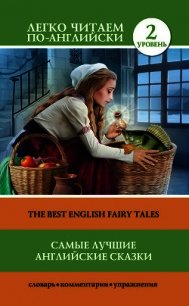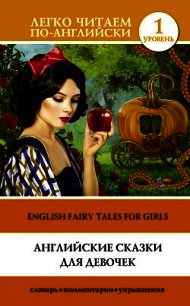More English Fairy Tales - Jacobs Joseph (читать книги полностью txt) 📗
Meanwhile the eighty-seven tales (representing some hundred and twenty variants) in my two volumes must represent the English folk-tale as far as my diligence has been able to preserve it at this end of the nineteenth century. There is every indication that they form but a scanty survival of the whole corpus of such tales which must have existed in this country. Of the seventy European story-radicles which I have enumerated in the Folk-Lore Society’s Handbook, pp. 117-35, only forty are represented in our collection: I have little doubt that the majority of the remaining thirty or so also existed in these isles, and especially in England. If I had reckoned in the tales current in the English pale of Ireland, as well as those in Lowland Scots, there would have been even less missing. The result of my investigations confirms me in my impression that the scope of the English folk-tale should include all those current among the folk in English, no matter where spoken, in Ireland, the Lowlands, New England, or Australia. Wherever there is community of language, tales can spread, and it is more likely that tales should be preserved in those parts where English is spoken with most of dialect. Just as the Anglo-Irish Pale preserves more of the pronunciation of Shakespeare’s time, so it is probable that Anglo-Irish stories preserve best those current in Shakespeare’s time in English. On the other hand, it is possible that some, nay many, of the Anglo-Irish stories have been imported from the Celtic districts, and are positively folk-translations from the Gaelic. Further research is required to determine which is English and which Celtic among Anglo-Irish folk-tales. Meanwhile my collection must stand for the nucleus of the English folk-tale, and we can at any rate judge of its general spirit and tendencies from the eighty-seven tales now before the reader.
Of these, thirty-eight are marchen proper, i.e., tales with definite plot and evolution; ten are sagas or legends locating romantic stories in definite localities; no less than nineteen are drolls or comic anecdotes; four are cumulative stories: six beast tales; while ten are merely ingenious nonsense tales put together in such a form as to amuse children. The preponderance of the comic element is marked, and it is clear that humour is a characteristic of the English folk. The legends are not of a very romantic kind, and the marchen are often humorous in character. So that a certain air of unromance is given by such a collection as that we are here considering. The English folk-muse wears homespun and plods afoot, albeit with a cheerful smile and a steady gaze.
Some of this effect is produced by the manner in which the tales are told. The colloquial manner rarely rises to the dignified, and the essence of the folk-tale manner in English is colloquial. The opening formul? are varied enough, but none of them has much play of fancy. “Once upon a time and a very good time it was, though it wasn’t in my time nor in your time nor in any one else’s time,” is effective enough for a fairy epoch, and is common, according to Mayhew (London Labour. iii.), among tramps. We have the rhyming formula:
on which I have variants not so refined. Some stories start off without any preliminary formula, or with a simple “Well, there was once a ——”. A Scotch formula reported by Mrs. Balfour runs, “Once on a time when a’ muckle folk were wee and a’ lees were true,” while Mr. Lang gives us “There was a king and a queen as mony ane’s been, few have we seen and as few may we see.” Endings of stories are even less varied. “So they married and lived happy ever afterwards,” comes from folk-tales, not from novels. “All went well that didn’t go ill,” is a somewhat cynical formula given by Mrs. Balfour, while the Scotch have “they lived happy and died happy, and never drank out of a dry cappie.”
In the course of the tale the chief thing to be noticed is the occurrence of rhymes in the prose narrative, tending to give the appearance of a cante-fable. I have enumerated those occurring in English Fairy Tales in the notes to Childe Rowland (No. xxi.). In the present volume, rhyme occurs in Nos. xlvi., xlviii., xlix., lviii., lx., lxiii. (see Note), lxiv., lxxiv., lxxxi., lxxxv., while lv., lxix., lxxiii., lxxvi., lxxxiii., lxxxiv., are either in verse themselves or derived from verse versions. Altogether one third of our collection gives evidence in favour of the cante-fable theory which I adduced in my notes to Childe Rowland. Another point of interest in English folk-narrative is the repetition of verbs of motion, “So he went along and went along and went along.” Still more curious is a frequent change of tense from the English present to the past. “So he gets up and went along.” All this helps to give the colloquial and familiar air to the English fairy-tale not to mention the dialectal and archaic words and phrases which occur in them.
But their very familiarity and colloquialism make them remarkably effective with English-speaking little ones. The rhythmical phrases stick in their memories; they can remember the exact phraseology of the English tales much better, I find, than that of the Grimms’ tales, or even of the Celtic stories. They certainly have the quality of coming home to English children. Perhaps this may be partly due to the fact that a larger proportion of the tales are of native manufacture. If the researches contained in my Notes are to be trusted only i.-ix., xi., xvii., xxii., xxv., xxvi., xxvii., xliv., l., liv., lv., lviii., lxi., lxii., lxv., lxvii., lxxviii., lxxxiv., lxxxvii. were imported; nearly all the remaining sixty are home produce, and have their roots in the hearts of the English people which naturally respond to them.
In the following Notes, I have continued my practice of giving (1) Source where I obtained the various tales. (2) Parallels, so far as possible, in full for the British Isles, with bibliographical references when they can be found; for occurrences abroad I generally refer to the list of incidents contained in my paper read before the International Folk-Lore Congress of 1891 and republished in the Transactions, 1892, pp. 87-98. (3) Remarks where the tale seems to need them. I have mainly been on the search for signs of diffusion rather than of “survivals” of antiquarian interest, though I trust it will be found I have not neglected these.
XLIV. THE PIED PIPER
Source.—Abraham Elder, Tales and Legends of the Isle of Wight (London, 1839), pp. 157-164. Mr. Nutt, who has abridged and partly rewritten the story from a copy of Elder’s book in his possession, has introduced a couple of touches from Browning.
Parallels.—The well-known story of the Pied Piper of Hameln (Hamelin), immortalised by Browning, will at once recur to every reader’s mind. Before Browning, it had been told in English in books as well known as Verstegan’s Restitution of Decayed Intelligence, 1605; Howell’s Familiar Letters (see my edition, p. 357, n.); and Wanley’s Wonders of the Little World. Browning is said to have taken it from the last source (Furnivall, Browning Bibliography, 158), though there are touches which seem to me to come from Howell (see my note ad loc.), while it is not impossible he may have come across Elder’s book, which was illustrated by Cruikshank. The Grimms give the legend in their Deutsche Sagen (ed. 1816, 330-33), and in its native land it has given rise to an elaborate poem a la Scheffel by Julius Wolff, which has in its turn been the occasion of an opera by Victor Nessler. Mrs. Gutch, in an interesting study of the myth in Folk-Lore iii., pp. 227-52, quotes a poem, The Sea Piece, published by Dr. Kirkpatrick in 1750, as showing that a similar legend was told of the Cave Hill, Belfast.


